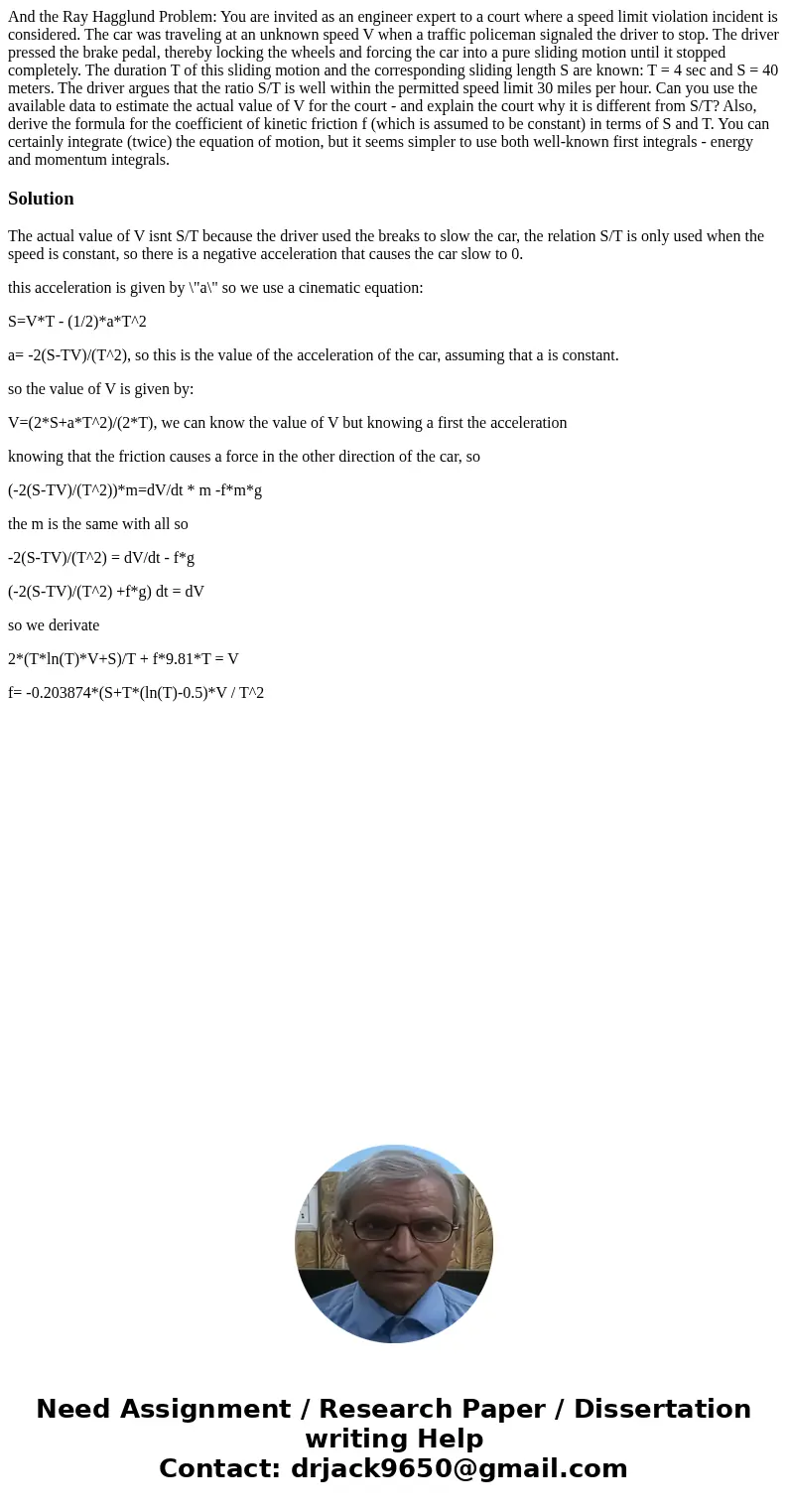And the Ray Hagglund Problem: You are invited as an engineer expert to a court where a speed limit violation incident is considered. The car was traveling at an unknown speed V when a traffic policeman signaled the driver to stop. The driver pressed the brake pedal, thereby locking the wheels and forcing the car into a pure sliding motion until it stopped completely. The duration T of this sliding motion and the corresponding sliding length S are known: T = 4 sec and S = 40 meters. The driver argues that the ratio S/T is well within the permitted speed limit 30 miles per hour. Can you use the available data to estimate the actual value of V for the court - and explain the court why it is different from S/T? Also, derive the formula for the coefficient of kinetic friction f (which is assumed to be constant) in terms of S and T. You can certainly integrate (twice) the equation of motion, but it seems simpler to use both well-known first integrals - energy and momentum integrals.
The actual value of V isnt S/T because the driver used the breaks to slow the car, the relation S/T is only used when the speed is constant, so there is a negative acceleration that causes the car slow to 0.
this acceleration is given by \"a\" so we use a cinematic equation:
S=V*T - (1/2)*a*T^2
a= -2(S-TV)/(T^2), so this is the value of the acceleration of the car, assuming that a is constant.
so the value of V is given by:
V=(2*S+a*T^2)/(2*T), we can know the value of V but knowing a first the acceleration
knowing that the friction causes a force in the other direction of the car, so
(-2(S-TV)/(T^2))*m=dV/dt * m -f*m*g
the m is the same with all so
-2(S-TV)/(T^2) = dV/dt - f*g
(-2(S-TV)/(T^2) +f*g) dt = dV
so we derivate
2*(T*ln(T)*V+S)/T + f*9.81*T = V
f= -0.203874*(S+T*(ln(T)-0.5)*V / T^2

 Homework Sourse
Homework Sourse